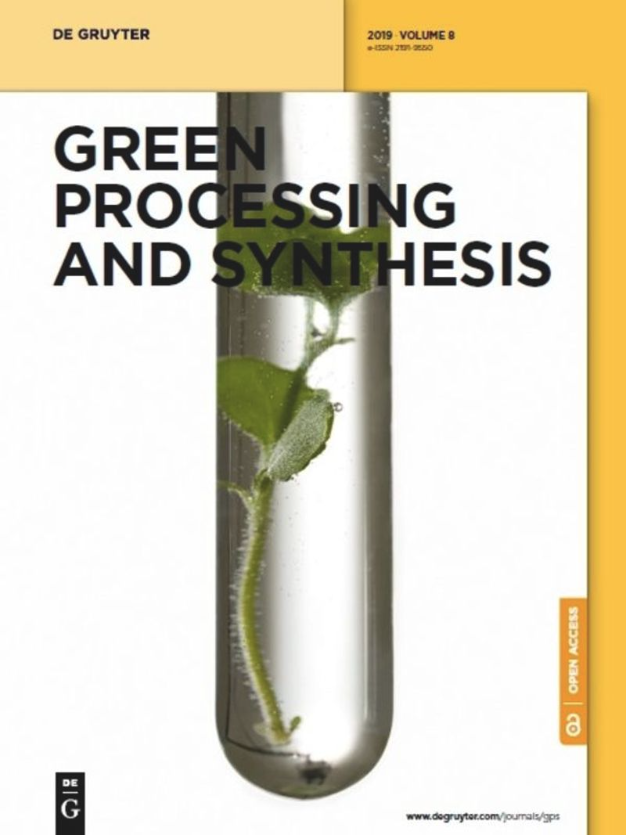碱预处理对餐厨垃圾厌氧消化特性的影响及微生物多样性分析
IF 3
4区 工程技术
Q2 CHEMISTRY, MULTIDISCIPLINARY
引用次数: 0
摘要
摘要厨余垃圾中有机物和水分含量高,易发生生物降解和分解产生异味。如果不及时收集和运输或处理不当,极有可能污染环境和传播疾病。由于餐厨垃圾中油脂含量较高,且有一部分有机物不能水解,因此厌氧消化技术的发展受到很大限制。采用不同浓度的NaOH、KOH和Ca(OH) 2对餐厨垃圾进行预处理,并进行了50天的中温厌氧消化实验。这项研究揭示了厨房垃圾的污染减排和能源生产。结果表明:(1)碱预处理可以降低餐厨垃圾的脂质含量,提高溶解性有机物的浓度。当NaOH添加量为3%时,餐厨垃圾油脂的降解率最高可达50.51%,可溶化学需氧量提高235.3%。(2)餐厨垃圾经碱预处理后厌氧消化过程中累积甲烷(ch4)产量提高,产气效率提高。NaOH和KOH预处理餐厨垃圾的产气量在第11 ~ 12天达到最大值,产气效率分别为40.4和45.2 mL·g·VS−1。累积ch4输出量从未处理的370.2 mL·g·VS - 1分别增加到393.1和434.1 mL·g·VS - 1。此外,沼气中ch4浓度由54.8%(未处理)分别提高到59.1%和61.7%。(3)细菌的Chao1和Ace值呈先升高后降低的趋势。第10天,细菌多样性达到最大值,第20天,古生菌多样性达到最大值。因此,验证了水解酸化效率和程度的提高对于厌氧消化反应的快速和完全至关重要。本文章由计算机程序翻译,如有差异,请以英文原文为准。
Effect of pretreatment with alkali on the anaerobic digestion characteristics of kitchen waste and analysis of microbial diversity
Abstract Kitchen waste contains high contents of organic matter and moisture, and it is prone to biodegrade and decompose to give odors. If not collected and transported promptly or treated improperly, it is highly likely to pollute the environment and spread diseases. Because the lipid content in kitchen waste is high and a portion of organic matter is not subject to hydrolysis, the development of anaerobic digestion technology has been greatly limited. Kitchen waste was pretreated with NaOH, KOH, and Ca(OH) 2 with different concentrations, and 50 days sequencing batch mesophilic anaerobic digestion experiments were conducted. This study sheds light on the pollution reduction and energy generation of kitchen waste. The results are as follows: (1) The lipid content of kitchen waste could be reduced, and the concentration of dissolved organic matter could be increased by pretreating with alkali. The degradation rate of kitchen waste lipid reached a maximum of 50.51%, if 3% NaOH was added, and the soluble chemical oxygen demand concentration was increased by 235.3%. (2) The cumulative methane (CH 4 ) output and biogas production efficiency were improved in the anaerobic digestion process with kitchen waste pretreated with alkali. The maximum daily gas output of kitchen waste pretreated with NaOH and KOH took place on the 11th to 12th day, with the biogas production efficiency of 40.4 and 45.2 mL·g·VS −1 . The cumulative CH 4 output was increased from 370.2 mL·g·VS −1 (untreated) to 393.1 and 434.1 mL·g·VS −1 , respectively. In addition, the concentration of CH 4 in biogas was increased from 54.8% (untreated) to 59.1% and 61.7%, respectively. (3) The Chao1 and Ace values of bacteria were increased first and then decreased. On the 10th day, the diversity of bacteria reached the highest value, and on the 20th day, the diversity of archaea reached its maximum. Therefore, it was verified that the improvement in the hydrolysis acidification efficiency and degree was crucial for the rapid and complete anaerobic digestion reactions.
求助全文
通过发布文献求助,成功后即可免费获取论文全文。
去求助
来源期刊

Green Processing and Synthesis
CHEMISTRY, MULTIDISCIPLINARY-ENGINEERING, CHEMICAL
CiteScore
6.70
自引率
9.30%
发文量
78
审稿时长
7 weeks
期刊介绍:
Green Processing and Synthesis is a bimonthly, peer-reviewed journal that provides up-to-date research both on fundamental as well as applied aspects of innovative green process development and chemical synthesis, giving an appropriate share to industrial views. The contributions are cutting edge, high-impact, authoritative, and provide both pros and cons of potential technologies. Green Processing and Synthesis provides a platform for scientists and engineers, especially chemists and chemical engineers, but is also open for interdisciplinary research from other areas such as physics, materials science, or catalysis.
 求助内容:
求助内容: 应助结果提醒方式:
应助结果提醒方式:


